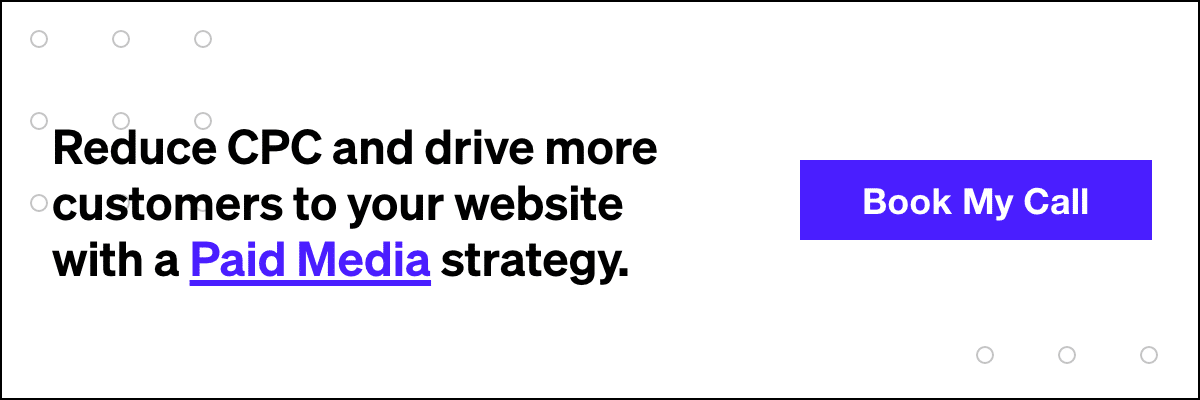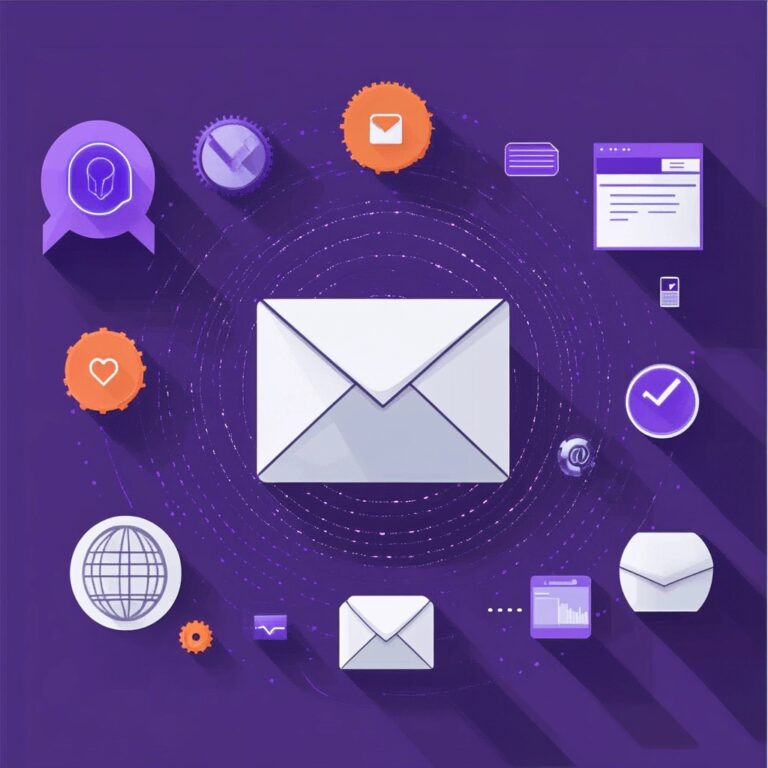What is LinkedIn retargeting?

- 1. Retargeting basics
- 2. Retargeting in the real world
- 3. The basics of LinkedIn retargeting
- 4. How does LinkedIn retargeting work?
- 5. Which users can be retargeted through LinkedIn?
- 6. What are the benefits of LinkedIn for retargeting?
- 7. Is LinkedIn the only option for retargeting?
- 8. Is retargeting the same thing as remarketing?
- 9. Bullseye: for LinkedIn retargeting, pair up with Power Digital
On the hunt to learn fresh but tried-and-true methods for making warm leads hotter? LinkedIn retargeting may be a viable—and valuable—avenue.
Targeted towards prospective consumers who have shown interest but have yet to convert, this strategy is widely employed by brands in various industries for flourishing results. LinkedIn retargeting works to stoke user interest in both a product or service and the brand that sells it.
What’s unique about the LinkedIn platform? Which businesses are best served by marketing on this channel? Keep reading to unpack the answers to these questions and learn more about this promising advertising strategy.
Retargeting basics
Used by marketers across the board, retargeting is a strategy employed to address the estimated 97% of prospective consumers who never visit a site again after checking it out for the first time.1 The practice uses paid advertisements on host sites to remind a user of their initial interest and aims to persuade them to act.
What’s the dream outcome of a retargeting campaign? To snag a user’s attention, redirect it and secure a conversion—whether that’s making a purchase, subscribing to an email list or signing up for an app’s free trial.
Retargeting in the real world
Virtually anyone who roams the internet is probably (if not positively) familiar with the experience of retargeting—even if they’re not versed in the mechanics that make it work. Retargeting can take place on a social media app, a blog post or wherever they might roam the internet.
Say a user hops online to search for a software tool that helps edit podcasts. Their search is met with a post from Ogee, an (imaginary) audio editing company that has secured one of the top SERP spots on Google. They click on Ogee’s website, scan their prices and bounce, for whatever reason—their food delivery arrives, the price is outside of their budget or they’re late for a ZOOM meeting.
In a retargeting campaign, here’s what might happen next:2
- The next time the user goes online, whether it’s seconds or hours later, advertisements for Ogee catch their eye. Ogee ads appear on their LinkedIn feed when they’re checking out updates during the day.
- Later, they see the brand on a Facebook ad when they’re responding to a message from their aunt.
- That evening, in the margins of the blog post on content marketing, they spot a review ad on Ogee’s podcast software.
The more they see it, the more real estate Ogee begins to take up in their mind—making it a top-of-mind solution for what they’re looking for. When they’re ready to make a purchase, who do they head towards?
You guessed it.
The basics of LinkedIn retargeting
LinkedIn retargeting employs the same philosophy and shares the same objective as retargeting writ large. The only distinction is using LinkedIn as its host site. On LinkedIn, brands can make another overture toward potential consumers and followers with whom they’ve already crossed paths.3
So, why LinkedIn?
Because it’s one of the biggest networking platforms on the planet. Here are some of its stats:
- LinkedIn has more than 800 million users in over 200 countries.
- 45 million people hit up LinkedIn per week to search for a job.
- 82% of B2B marketers report the highest rate of success on LinkedIn.
For B2B marketers, LinkedIn retargeting functions as a particularly effective way to reach a specific set of more professional prospective customers. It allows businesses to zero in on potential consumers according to their:
- Industry.
- Role in a company.
- Seniority in their role.
- Company size.
- Location.
The specificity of these LinkedIn retargeting ads, coupled with the social media app’s immense number of users, increases a business’s chance of a successful second attempt with a potential customer.
How does LinkedIn retargeting work?
LinkedIn marketing has created new opportunities for companies to reach their target audience, especially through LinkedIn retargeting ads. LinkedIn retargeting uses what’s called the LinkedIn Insight tag, a small piece of JavaScript code that a business can easily install on each page of its website.
Whenever a user passes through one of these pages, this tag will leave a Cookie in their browser. For those users who have a LinkedIn account, it enables a business to find them again on the platform—and give them a push of encouragement through a paid advertisement or another form of messaging.
Because this tag stores all of the aforementioned details (e.g. their occupation, role or geographic location), it further allows a business to assess its performance within these demographics. It’s also a cinch to install and requires only a few minutes to do so.4
So through a video ad, a gathered list of emails, and LinkedIn users who have visited your website or viewed your post, brands are able to create custom audiences for their retargeting ad or campaign efforts.
Which users can be retargeted through LinkedIn?
Anyone who has demonstrated interest of some kind in a brand that also has a LinkedIn account can be retargeted on this platform. These could be:
- Website visitors. (Note: A business or brand must rack up 300 LinkedIn visitors before they can create a retargeting list for a specific page.)
- Users who have viewed a brand’s video (or a portion of a video) on LinkedIn.
- Users who have completed a lead generation form.
What are the benefits of LinkedIn for retargeting?
LinkedIn retargeting has a slew of potential advantages for businesses, from boosting brand awareness and credibility to participating in more meaningful conversions.
The LinkedIn retargeting campaign tactic also has an edge when it comes to:
- Creating refined, customized advertisements – LinkedIn retargeting enables a brand to tailor their ads and messages based on the user’s behavior. If a user checked out a pair of the business’s winter boots on their company site, for instance, they can display a LinkedIn retargeting ad for the same boots (along with a slightly higher-end pair and the skirt that looks fabulous with it). This gives a business the opportunity to upsell and cross-sell, while remaining in the realm of the user’s presumed interest.5
- Building credibility as well as visibility – Users encounter dozens, if not hundreds and thousands of new businesses on a regular basis. But which ones will actually stick in their minds?
It’s generally believed that a consumer must be exposed to a brand’s message five to seven times before an impression is made.6 Retargeting fosters this impact and helps eliminate the incredibly high possibility that a user may never visit a business’s website again.
- Leverage timing – The process of retargeting may be somewhat complex but it all occurs in milliseconds—even if a user only briefly paused while gliding through the internet, they may still be shown an advertisement for that product.
Psychologically, because the brand is still fresh in their brain, it can feel serendipitous and far less aggressive than seeing an advertisement for a product that has never crossed their mind. While deliberate and strategic on a business’s part, users who aren’t analyzing the mechanics behind advertising may read it as fortuitous—and all the more persuasive.
Is LinkedIn the only option for retargeting?
Definitely not. While creating a LinkedIn ad campaign can be beneficial in retargeting efforts, other popular and valuable avenues for retargeting include:
…and these are just the titans of the internet. A broad range of retargeting options—including many niche, smaller channels—can be viable. Marketing analytics can help select a brand’s best suite of retargeting channels depending on their objectives, where their target audience hangs out online, their budget and so forth.
Is retargeting the same thing as remarketing?
Retargeting and remarketing are often used interchangeably but they employ different tactics:
- Retargeting uses either a pixel-based approach (like a LinkedIn Insight tag) or a list-based approach to pursue leads. The former relies on installing code on their browser; the latter requires the user’s contact information.
- Remarketing is slightly more limited in terms of access to the user. However, it also comes with the capacity to be hyper-customizable.
The technique is performed exclusively over email, and a business must have the user’s email address to execute it. This could be secured in a transaction, by inviting users to complete an online order or inviting them to a newsletter list outright.
To phrase it differently, retargeting is typically employed to acquire new customers. Remarketing is used to retain leads or reanimate inactive users.
Bullseye: for LinkedIn retargeting, pair up with Power Digital
LinkedIn retargeting is one of many ways to attract prospective users and start building a long, beautiful and mutually rewarding friendship. Brands looking to leverage the potency of this platform need a growth-first approach—precisely what we do best at Power Digital.
If you’re looking for a full-service digital marketing agency offering retargeting strategy and execution on LinkedIn and a spate of other platforms, we want to work with you. Whether your goal is to build up leadership online or connect with followers on a more personal level, reach out today, schedule a consultation, and let’s explore how you’ll hit your brand’s next stride in growth.
Sources:
- MailChimp. What is retargeting? https://mailchimp.com/resources/what-is-retargeting/
- Forbes. What is retargeting and why is it important? https://www.forbes.com/sites/forbesagencycouncil/2020/05/20/what-is-retargeting-and-why-is-it-important/?sh=3f553c3e7212
- HubSpot. Everything you need to know about LinkedIn retargeting. https://blog.hubspot.com/marketing/linkedin-retargeting
- LinkedIn. The LinkedIn insight tag– faqs. https://www.linkedin.com/help/linkedin/answer/a427660
- LinkedIn Marketing Solutions. Retargeting for LinkedIn ads. https://business.linkedin.com/marketing-solutions/ad-targeting/retargeting
- Small Biz Genius. 50+ eye-opening brand statistics – 2022 edition. https://www.smallbizgenius.net/by-the-numbers/branding-statistics/
Our Editorial Standards
Reviewed for Accuracy
Every piece is fact-checked for precision.
Up-to-Date Research
We reflect the latest trends and insights.
Credible References
Backed by trusted industry sources.
Actionable & Insight-Driven
Strategic takeaways for real results.






